As artificial intelligence continues to reshape creative industries, video editors worldwide are asking one crucial question: Will AI tools like Runway, Google Veo, and OpenAI's Sora replace human editors? The answer is far more nuanced than you might expect.

The video editing landscape is undergoing a dramatic transformation. AI-powered tools are no longer futuristic concepts—they're here, accessible, and fundamentally changing how content gets created. But understanding whether these tools will replace human editors requires looking beyond the hype at both their remarkable capabilities and critical limitations.
What AI Video Tools Can Actually Do Today
Current AI video technology has achieved capabilities that seemed impossible just a few years ago. Modern systems can analyze hours of raw footage and create rough cuts based on dialogue patterns, action sequences, and music beats. What traditionally took hours of manual work now happens in minutes.
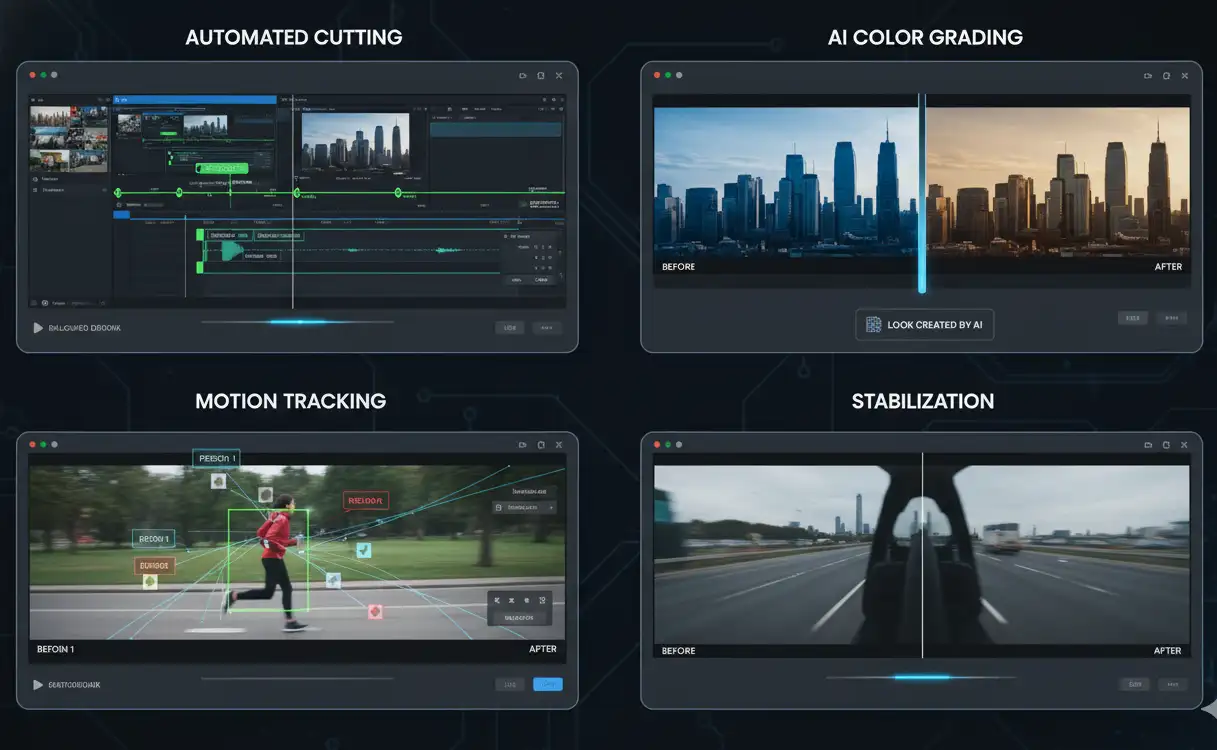
Color grading, once requiring trained eyes and hours of fine-tuning, can now be automated. AI systems match color palettes across different cameras, apply consistent grading throughout projects, and suggest color schemes based on mood or genre. These tools analyze thousands of professional films to understand what makes cinematography visually appealing.
Motion tracking has been revolutionized. Object tracking that once required painstaking frame-by-frame work now happens automatically. AI can follow subjects through complex scenes, stabilize shaky footage, and remove unwanted objects from moving shots with minimal input.
Perhaps most revolutionary is text-to-video generation. Tools like Runway and Google Veo can create short clips from simple text descriptions. While still limited in duration and consistency, this technology hints at a future where generating B-roll or visual effects becomes as simple as typing a sentence.
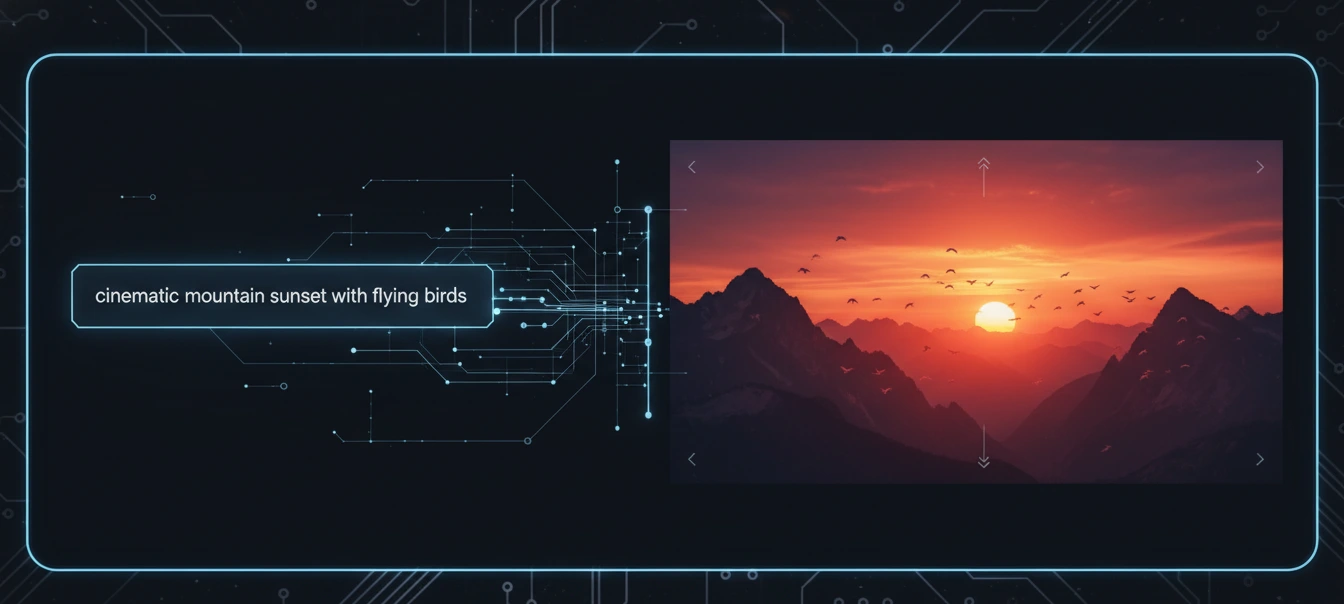
The Critical Gap: What AI Cannot Do
Despite impressive technical achievements, AI video editing tools face fundamental limitations rooted in the nature of creativity and storytelling itself. These aren't temporary technical hurdles—they reveal why human editors remain essential.
Emotional Intelligence and Dramatic Timing
Great editing is about feeling, not just technical precision. A skilled editor knows when to hold on an actor's face for an extra second to let emotion resonate with the audience. They understand the rhythm of tension and release, the power of silence, and the weight of a meaningful glance. AI can identify faces and measure shot length, but it cannot feel the emotional impact of a scene or understand the subtle human elements that make moments powerful.
Creative Vision and Artistic Intent
Editing is fundamentally about making choices—what to show, what to hide, when to cut, and when to let a moment breathe. These decisions reflect artistic vision that goes far beyond pattern recognition. AI operates within its training data boundaries, but truly innovative editing often means breaking conventions, subverting expectations, and making bold choices that algorithms would never suggest.

Context, Culture, and Nuance
Professional editors bring cultural knowledge, social awareness, and contextual understanding to every project. They know how different audiences will interpret visual symbols, understand political or social sensitivities, and can navigate complex creative briefs that require reading between the lines. This contextual intelligence requires lived human experience that AI simply doesn't possess.
Creative Problem-Solving
When footage doesn't work as planned—when audio is problematic, shots don't match, or the story isn't landing—editors improvise creative solutions. They might repurpose footage for entirely different scenes, create meaning through unexpected juxtapositions, or restructure entire sequences. AI follows patterns and applies learned techniques, but rarely innovates in the face of unique problems.
AI as a Powerful Assistant, Not a Replacement
The real revolution isn't AI replacing editors—it's AI amplifying human capabilities. The most successful editors are learning to leverage AI tools to handle technical work while focusing their energy on creative decisions that truly matter.
AI excels at tedious, time-consuming tasks that don't require creative judgment. Multicam synchronization happens automatically by analyzing audio waveforms. Transcription and subtitle generation create accurate captions and searchable transcripts from dialogue. Media organization tags and categorizes thousands of clips based on content, people, and scenes. Green screen removal and rotoscoping that once required frame-by-frame work now happen with a few clicks.
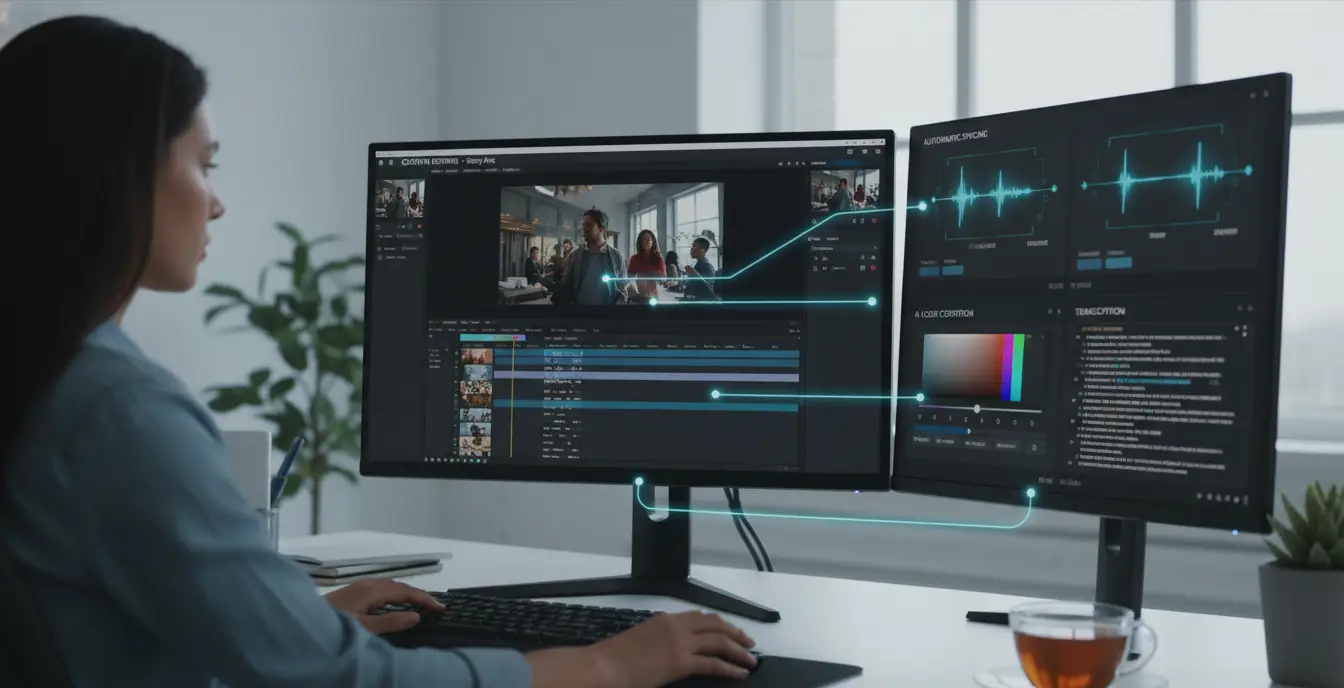
Real-World Applications Across Industries
Social Media Content Creation
For individual creators and small teams producing high volumes of content, AI tools are game-changers. Automated captioning makes videos accessible and algorithm-friendly. Smart cropping adapts content for different platform aspect ratios. Quick transitions and effects help maintain viewer attention. These tools democratize video creation, allowing talented storytellers to compete without massive production budgets.
Corporate and Marketing Videos
In the corporate world, many videos follow predictable formats—talking head interviews, product demonstrations, event coverage. AI excels at these straightforward projects. It can assemble interviews, add branded graphics and lower thirds, and create polished promotional content that meets professional standards without requiring extensive human editing time.
Film and High-End Production
Even in prestigious film and television production, AI is finding its place. Professional editors use these tools to handle time-consuming technical work—organizing massive amounts of footage, creating multiple assembly cuts for comparison, or handling visual effects preparation. This efficiency gives editors more time for creative work that defines cinematic quality: pacing scenes, building emotional arcs, and collaborating with directors to realize their vision.
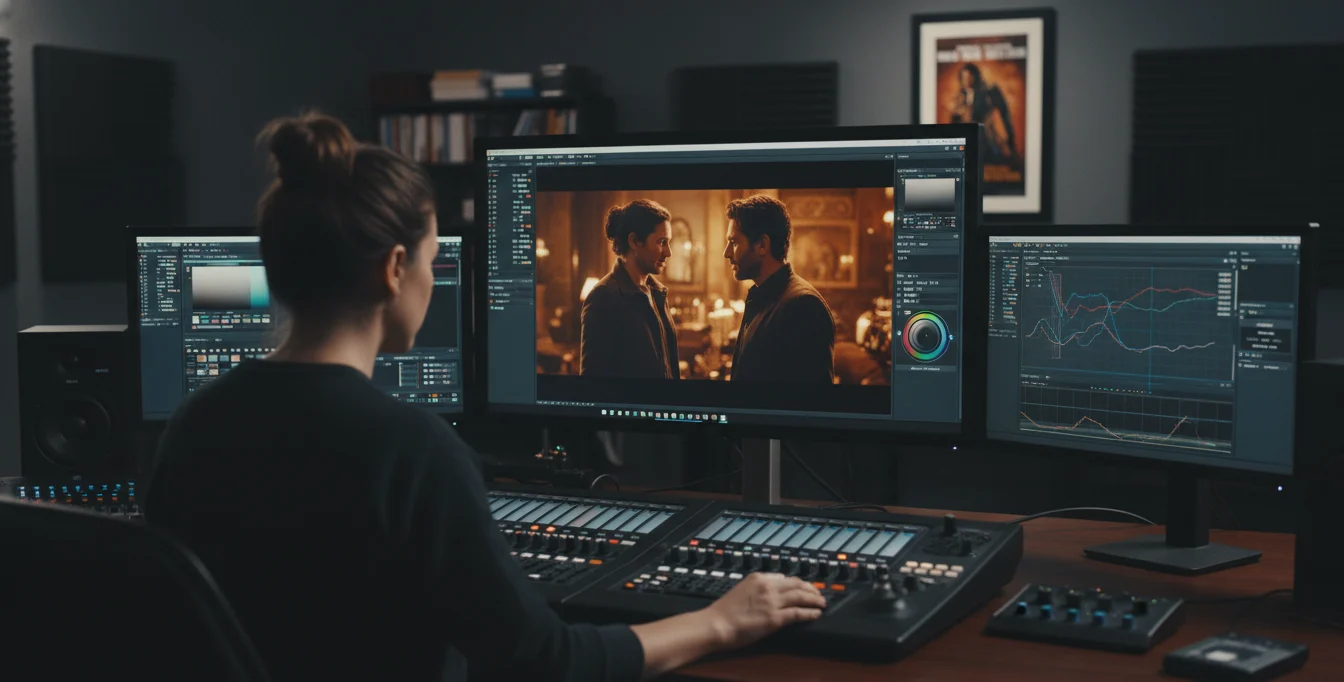
Leading AI Tools Transforming the Industry
Runway ML has emerged as a comprehensive AI video platform offering everything from basic editing tools to cutting-edge text-to-video generation. Its green screen removal and motion tracking features work remarkably well, while its generative AI capabilities hint at the future of content creation.
Google Veo represents the next generation of text-to-video technology, focusing on realistic motion and cinematographic quality. While not yet widely available, Veo could fundamentally change how B-roll and establishing shots get created.
Adobe Sensei, integrated directly into Premiere Pro, handles practical tasks editors face daily. Auto-reframe intelligently crops footage for different aspect ratios, scene detection identifies natural edit points, and color matching ensures visual consistency across projects.
Descript revolutionized editing for interview and dialogue-heavy content by letting editors work with transcripts instead of timelines. Cutting video becomes as simple as editing text—delete words from the transcript, and the corresponding video disappears. This approach dramatically speeds up podcast editing, interview assembly, and documentary work.
Essential Skills for Future Video Editors
As AI handles more technical tasks, certain human skills become even more valuable. Smart editors are investing in capabilities that complement rather than compete with artificial intelligence.
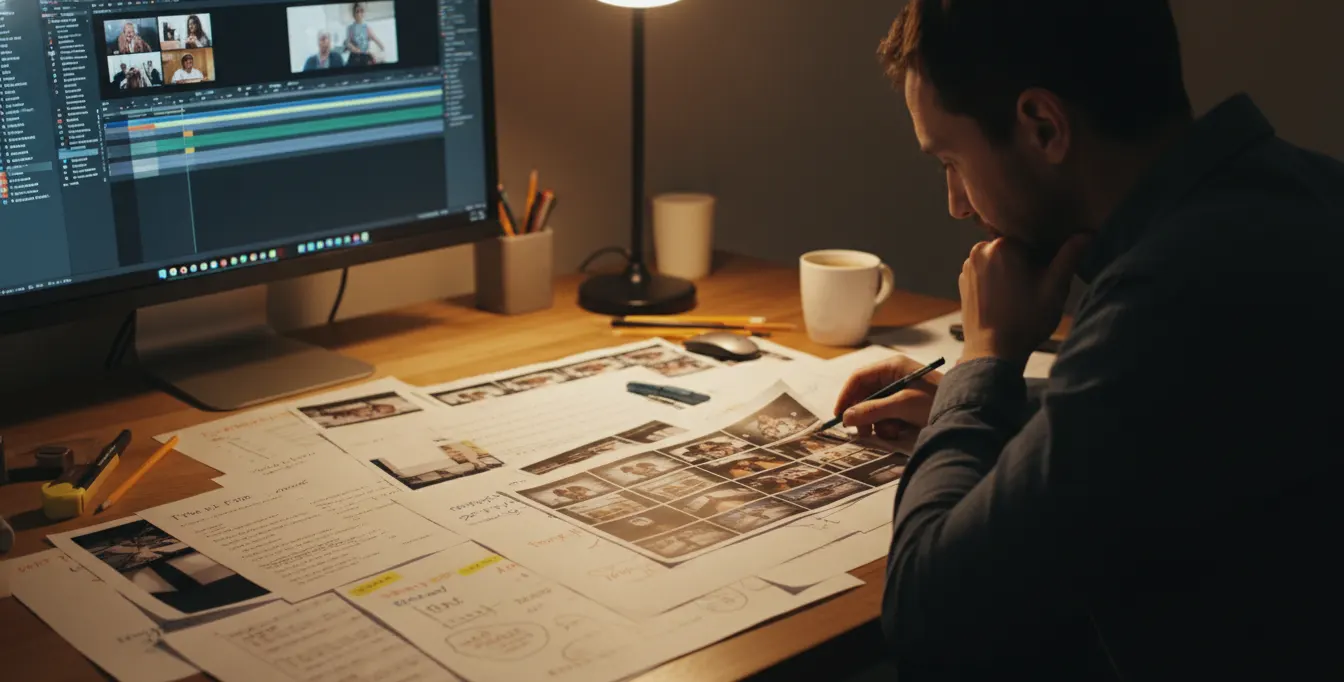
Mastering storytelling becomes paramount when technical skills are commoditized. Understanding narrative structure, character development, and emotional pacing separates good editors from great ones. Study film theory, analyze successful movies, and understand what makes stories resonate with audiences.
Developing creative direction means cultivating a unique visual style and aesthetic sensibility. The ability to create distinctive, memorable work that reflects artistic vision will always be in demand, regardless of available technology.
Building collaboration skills grows more important as technical work becomes automated. Working effectively with directors, understanding client needs, and translating creative briefs into finished products requires interpersonal skills no AI can replicate.
Achieving AI fluency is now a core competency. Understanding which AI tools to use for which tasks, and when to override AI suggestions with human judgment, separates thriving editors from those struggling to adapt.
Exercising critical judgment means knowing when to break rules, when to try unconventional approaches, and when to trust creative instincts over algorithmic suggestions. This remains uniquely human territory.
The Hybrid Future
The future of video editing isn't a battle between humans and machines—it's a partnership leveraging the strengths of both. Imagine workflows where AI generates multiple rough cut options instantly, suggests creative possibilities you might not have considered, and handles tedious technical work automatically in the background. Meanwhile, editors focus entirely on creative and strategic decisions that actually impact the final product.
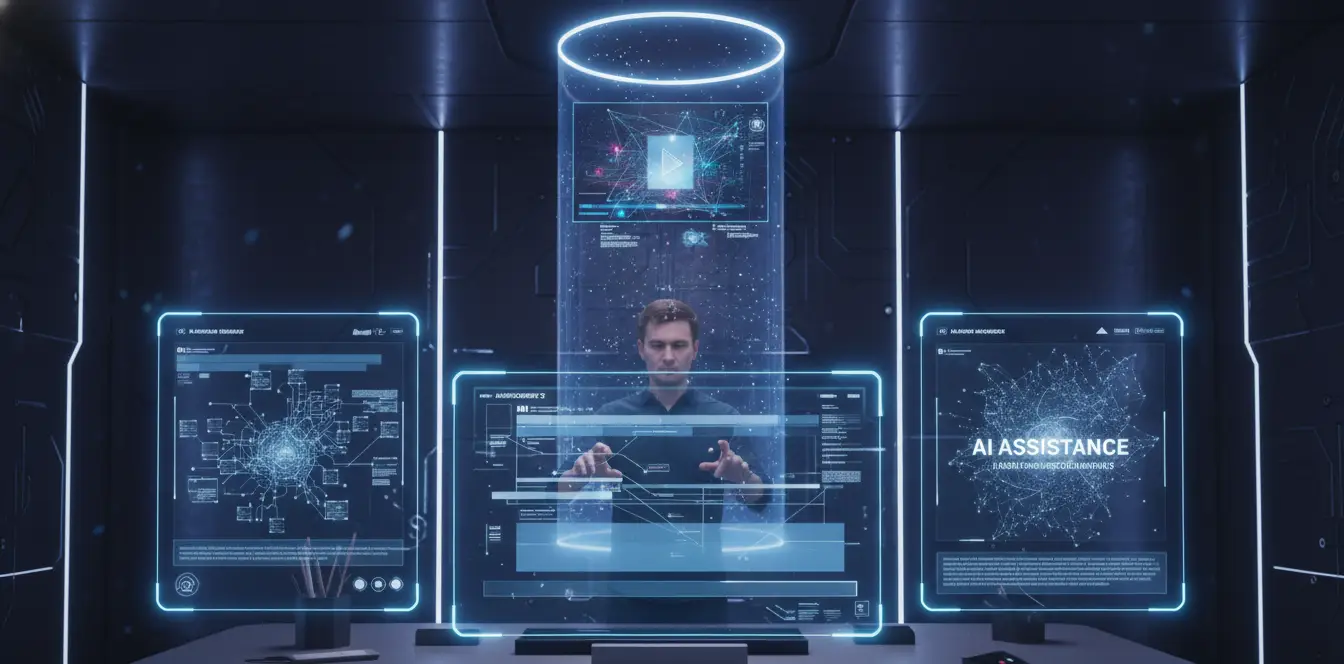
This hybrid approach doesn't just maintain quality while reducing timelines—it actually enables higher quality work by letting editors spend their time on what they do best: making creative decisions that serve the story.
Practical Steps for Video Editors
Embrace AI tools now. Start learning these technologies before you're forced to catch up. The editors who thrive will be early adopters who understand both the capabilities and limitations of AI.
Develop your unique voice. Ask yourself what only you can bring to a project. Your creative vision, storytelling instincts, and personal style are your competitive advantages in an AI-augmented world.
Focus on storytelling. Technical skills are becoming commoditized, but creative vision never will be. Invest in understanding what makes stories work and how editing serves narrative.
Stay adaptable. The tools will continue evolving rapidly. Make continuous learning a habit rather than a response to crisis. Subscribe to industry publications, take courses, and experiment with new tools regularly.
Build relationships. People hire editors they trust and enjoy working with. Technical skills can be learned, but professional relationships and reputation are built over time through consistently delivering quality work and being collaborative partners.
The Bottom Line
Can AI replace video editors? For basic, formulaic content that follows predictable patterns—perhaps eventually. But for work that requires artistic judgment, emotional intelligence, creative vision, and the ability to understand and enhance human stories—absolutely not.
The editors who thrive in this new landscape will be those who learn to wield AI as a powerful assistant while doubling down on the irreplaceable human elements of their craft. The real question isn't whether AI will replace you, but whether you'll embrace it to enhance your capabilities and free yourself to focus on the creative work that makes you irreplaceable.
The future belongs to editors who understand that the best work comes from collaboration between human creativity and artificial intelligence—each doing what it does best to create something neither could achieve alone. Rather than fearing AI, successful editors are learning to dance with it, using these powerful tools to amplify their creative vision and deliver work that's both technically excellent and emotionally resonant.
The transformation is happening now. The editors who adapt, learn, and evolve will find themselves not replaced by AI, but empowered by it—more creative, more efficient, and more valuable than ever before.
